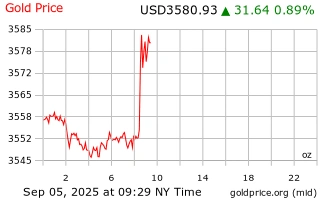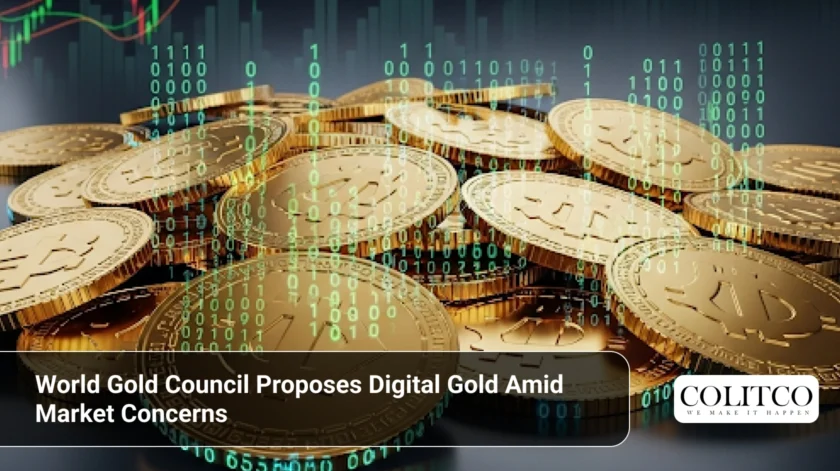The World Gold Council has put onto the market a new concept for gold ownership and trading. It is called Pooled Gold Interests (PGIs) and seeks to harness the advantages of the allocated and unallocated gold systems. Allocated gold offers security but low liquidity, whereas unallocated gold offers ease of transfer but with credit risk.
PGIs promise an opportunity for fractional ownership of physical gold stored in secure vaults by such a fusion. Owners would have a level of security and ease of transfer while still retaining such characteristics as being usable as collateral. The Council states that this system could modernise the manner in which investors and institutions relate to gold in financial markets.
The plan is for the set-up to be accomplished in conjunction with the legal firm Linklaters and with Hilltop Walk Consulting. Together, they have released a white paper that proposes how PGIs can function as a “third category” of gold transactions internationally.
 World Gold Council Launches Pooled Gold Interests To Modernise Gold Ownership And Trading
World Gold Council Launches Pooled Gold Interests To Modernise Gold Ownership And Trading
Why “Digital Gold Amid” Rising Competition?
The announcement came at a time when gold was facing ever more competition from digital assets. Stablecoins and central bank digital currency or CBDCs, were gaining visibility as potential stores of value. Some analysts argue that these new means might diminish the relevance of gold.
Notwithstanding, some would proscribe any such conclusion. Commerzbank strategist Thu Lan Nguyen has, in fact, maintained that gold possesses such characteristics unmatched by anything else. Political neutrality and slow, predictable supply growth are what she points to. She goes on to say that, unlike digital currencies, gold scarcity is universally accepted and trusted, which continues to sustain gold as a hedge.
By positioning PGIs as “digital gold amid” the changing market landscape, the Council wished to preserve the relevance of gold in this increasingly digitised financial world.
Can Gold Still Be Static?
The precious metal gold recently scaled historic highs. Spot prices reached US $3560.85 an ounce while, in New York, futures exchanged hands at US $3627.70 per ounce. These prices underline one’s enduring appeal for gold amidst volatility faced by equities and other assets.
Gold has record prices, and critics would have it that it is a “static” asset. Unlike stocks and bonds, which yield income from dividends and coupons, respectively, gold does not generate yield. For many banks and institutional investors, this makes gold less appealing beyond its use as a safe-haven asset.
The Council’s digital gold proposal aims to address this perception by identifying ways to make gold more malleable. If PGIs allow for collateralisation and smoother integration into financial systems, a bit of static image of gold could be removed.

How Will PGIs Work?
Pooled Gold Interests would represent a co-ownership in specific pools of gold being held in trust. These holdings would be carefully tracked, segregated, and legally protected. Investors could transfer ownership securely, with transactions settled quickly and with minimal counterparty risk.
It would be possible for PGIs to use gold as collateral for a wider range of financial products, thereby making it attractive to banks and asset managers, alongside fintech platforms looking for reliable assets in volatile times.
The structure also aims to harmonise practices across jurisdictions, and thus may become a recognised, global model. The World Gold Council considers that this may lead to an increase in liquidity in the OTC bullion markets while simultaneously giving comfort to regulators.
What Comes Next For PGI?
The PGI model will go into a trial phase on the London bullion market in the year ahead. The pilot is envisaged to include participation from major banks, trading houses, and other stakeholders. If the trial goes well, the PGI could become the third widely recognised gold ownership structure after allocated and unallocated accounts.
The World Gold Council has continued to shape industry standards. Its Gold Bar Integrity programme, launched in collaboration with the London Bullion Market Association, has already seen massive adoption, with over 96 per cent of LBMA good delivery refiners participating.
If PGIs match this level of uptake, the model may transform how investors, for both retail and institutional purposes, interact with gold.
Will The Industry Buy In?
Not all stakeholders are convinced. Adrian Ash, research director at BullionVault, called the initiative “a solution in search of a problem.” He wondered whether the model actually addresses a pain point of investors who already accept the present-day gold holding structures.
On the other hand, some see PGIs as part of a much bigger trend. As financial systems become increasingly digitised, traditional commodities will be under increasing pressure to adapt. In that sense, the Council’s initiative indicates the shift: an option to keep gold at the forefront in digital finance.
PGI’s success will then rest on industry adoption. Though there is scepticism, recent momentum from the Gold Bar Integrity program indicates that the sector embraces innovation that delivers tangible benefits.
Also Read: Who Won in August? Top ASX Resources Performers (Gold, Rare Earth & Copper)
FAQs
Q1: What Does “World Gold Council Proposes” Mean In This Context?
It refers to the Council’s new proposal of Pooled Gold Interests, a hybrid digital ownership model for gold.
Q2: What Is The Meaning Of “Digital Gold Amid” In This Development?
It speaks to digital gold solutions being launched during increasing concerns of stablecoin and CBDC competition.
Q3: How Does PGI Differ From Existing Gold Ownership Systems?
PGIs straddle the advantages of security in allocated gold and liquidity in unallocated gold, minimising counterparty risk.
Q4: Has Gold Set New Record Prices Recently?
Yes. As demand surged, spot price reached $3560.85, and futures price climbed to $3627.7 per ounce.












